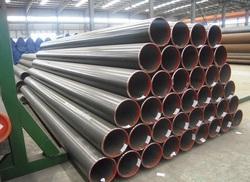
Steel, the most versatile metals of all is used in a multitude of industrial and commercial applications. A wide variety of products made from this metal are handled by various kinds of dealers such as the stainless steel plates suppliers, alloy steel round bars suppliers, casing pipes suppliers and many more. Here we will talk about casing pipes and its varied applications.
Casing pipe is a type of a steel pipe which is used to surround and cover a carrier pipe which is set through the centre of the casing pipe. It is widely used to provide protection to underground utility lines like fibre optic cables, water mains, gas pipes, electrical power cables etc. The utility lines are spaced inside the casing pipe with the help of ‘casing spacers’ which come in carbon steel, stainless steel or plastic. The ends of the casing pipe are closed with ‘wrap around’ or ‘pull-on’ caps known as ‘casing end seals’ which are made of rubber.
The casing pipe that will be used has to fulfil certain parameters with regard to tensile strength, minimum yield, concentricity and tolerances of straightness. In many applications, if there are no specific parameters to be fulfilled then used natural gas pipes can also be utilized as casing pipes as long as they are of the required wall thickness and diameter. Casing pipes are available in varied diameters and sizes and also come in spiral-weld, straight seam, welded and rolled types.
Some of the applications where casing pipes are in great demand are:
- Water Well casing
- Road Bore casing
- Open Cut casing
- Culverts casing
- Casing pipe for Oil and Gas Transmission
- Tunnel casing
- Drilling casing
Casing pipes are a much needed item while boring a well. There is a need to drill through rock formations in order to reach to the well reservoir and while doing so sides of the well can cave in. Casing pipes come into the picture to give support to the well’s sides and prevent them from caving in. The pipes also offer protection to the well stream from external pollutants. The small gap between the sides of the well and the casing pipe is packed with cement so that the casing becomes a permanent fixture. Casing pipes are normally 40 feet long and are fabricated in joints and these are screwed further if longer lengths are required.
The longer lengths are called casing strings. Till the casings are jointed their ends are closed by a cap known as the thread protector. The casing ends have male threads and when they have to be jointed a cylindrical, short pipe having female threads known as a coupling is used. The diameter of this pipe is a little more that of the casing pipe. In order to ensure that the two ends are tightly sealed a thread compound is used.
Another form of pipes that prove useful during construction projects is the pipe with puddle flanges. This acts as a sealant around the pipes that go through concrete structures and offer them protection from the concrete. It also enables water to flow along the pipe’s external surface.
There are innumerable pipes made of steel that are being used in a wide range of applications!

